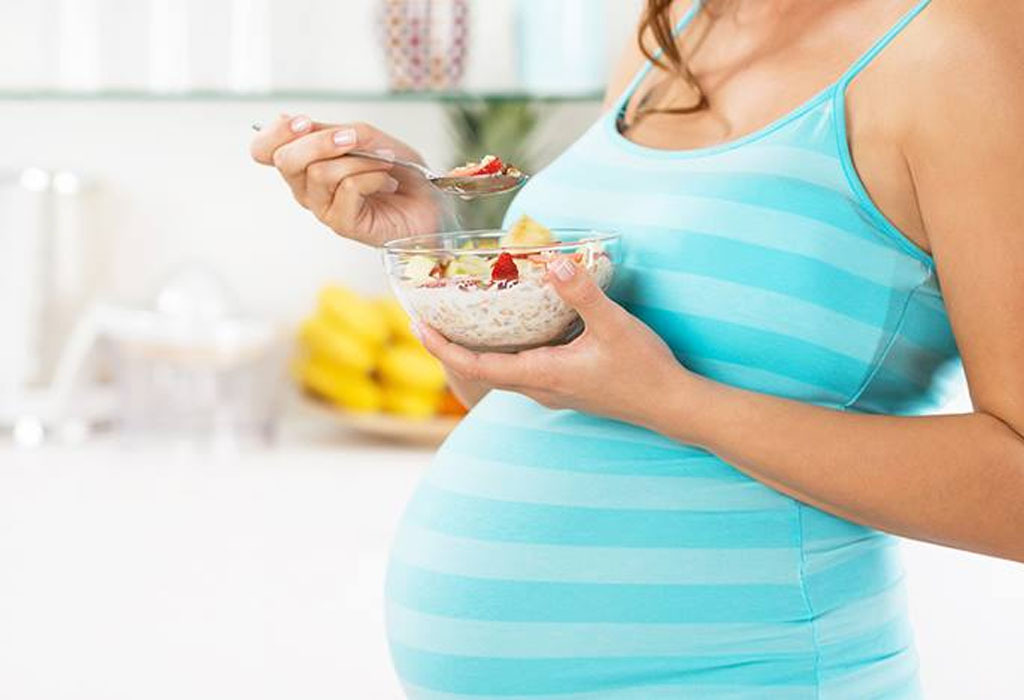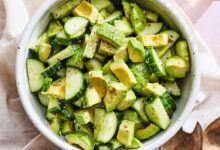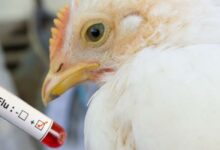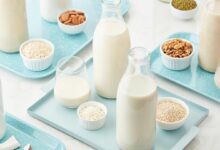Pregnancy Diet for a Healthy Pregnancy

To support fetal health and meet the physical demands of pregnancy, a nutritious diet is essential. Iron-rich diets, whole grains, fruits, and vegetables can all be helpful, but certain fish and cheeses, alcohol, and caffeine may not be.
A person’s diet should have a balance of proteins, carbs, and fats to ensure a successful pregnancy. But some foods and beverages, including alcohol and some cheeses, can be harmful to a pregnant woman’s health as well as the health of her unborn child in the future.
Outline of Foods for a Pregnancy Diet
Here’s an outline of the foods that should come first for a safe pregnancy.

Dairy Goods for a Pregnancy Diet
To meet the needs of the developing fetus, you must eat more protein and calcium throughout pregnancy. Casein and whey are two forms of high-quality protein found in dairy products. The greatest food supply of calcium is dairy, which also has significant levels of phosphorus, many B vitamins, magnesium, and zinc.
Greek yogurt in particular has many health benefits for expectant mothers. More calcium is found in it than in any other dairy product. Additionally, probiotic microorganisms are present in some kinds, which promote intestinal health.
Lactose-intolerant people can tolerate yogurt, particularly probiotic yogurt. Probiotic use during pregnancy may lower the chance of developing allergies, gestational diabetes, preeclampsia, and vaginal infections.
Legumes
Legumes are a great plant-based source of calcium, iron, protein, fiber, and folate (B9), all of which the body needs more of when a woman is pregnant. One of the B vitamins (B9) is folate. It is crucial for the mother’s and the fetus’s health, particularly in the first trimester.
But most expectant mothers aren’t getting nearly enough folate in their diets. Low birth weight and an increased risk of neural tube abnormalities have been associated with this. A child who consumes insufficient amounts of folate may also be more susceptible to infections and illness in the future.
High levels of folate are found in legumes. Lentils, chickpeas, or black beans can supply 65–90% of the RDA in a single cup. Legumes also contain a lot of fiber in general. Additionally, some types have significant levels of potassium, magnesium, and iron.
Potatoes
Beta-carotene, a plant-based molecule that the body converts into vitamin A, is abundant in sweet potatoes. Both proliferation and the differentiation of the majority of cells and tissues depend on vitamin A. For a fetus to develop healthily, it is crucial. It is generally recommended that pregnant women increase their intake of vitamin A by 10–40%.
They are also cautioned against consuming excessive amounts of animal-based vitamin A sources, as doing so may be hazardous. As a result, beta-carotene is a crucial source of vitamin A for expectant mothers.
A great way to get beta-carotene is through sweet potatoes. In addition, sweet potatoes have fiber, which may promote satiety, lessen blood sugar spikes, and enhance the health and mobility of the digestive system.
Salmon
Omega-3 vital fatty acids are abundant in salmon. The majority of people, even expectant mothers, do not consume nearly enough omega-3 through food. Pregnancy requires a diet rich in omega-3 fatty acids, particularly the long-chain DHA and EPA. These are abundant in seafood and aid in the development of the fetus’s eyes and brain.
However, because fatty fish contains mercury and other pollutants, pregnant women are generally recommended to limit their seafood consumption to twice a week (<340 g per week). Some women have avoided seafood entirely as a result of this, which has limited their intake of vital omega-3 fatty acids.
Nonetheless, research indicates that expectant mothers who consume 2-3 meals rich in fatty fish each week meet the necessary dose of omega-3 and have a rise in EPA and DHA levels in their blood.
Additionally, salmon is one of the rare natural sources of vitamin D, which is frequently deficient in diets. It is critical for numerous bodily functions, such as the immune system and bone health.
Eggs
One of the best ways to enhance total nutrient consumption is to eat whole eggs, which are highly nutritious. Because they include small amounts of nearly all the nutrients you require, eggs are the ultimate health food.
A big egg has 77 calories and is packed with healthy fat and protein. Numerous vitamins and minerals are also present in it. A fantastic source of choline is eggs. The body needs choline for a variety of functions, including healthy brain development.
Reduced brain function and an increased chance of neural tube abnormalities are two possible outcomes of low choline intake during pregnancy.
About 113 mg of choline, or 25% of the recommended daily amount for pregnant women (450 mg), can be found in a single whole egg.
Broccoli and Leafy Greens
Broccoli and leafy greens like spinach and kale are good sources of many of the nutrients pregnant women require. Fiber, calcium, iron, folate, vitamin C, vitamin K, vitamin A, and potassium are a few of them.
Broccoli and other leafy greens are also high in antioxidants. They also contain plant chemicals that are good for digestion and the immune system.
These veggies’ high fiber content may also aid in preventing constipation. This is a highly prevalent issue among expectant mothers. Low birth weight has also been associated with the consumption of green, leafy vegetables.
Lean Meat
One excellent source of high-quality protein is lean beef. Pork, poultry, and beef are all great providers of high-quality protein. Additionally, iron, choline, and other B vitamins—all of which are required in greater quantities in a pregnancy diet—are abundant in beef and pork.
Red blood cells utilize iron, an essential mineral, to make hemoglobin. It is crucial for providing oxygen to every cell in the body. Given that their blood volume is growing, pregnant women require extra iron. This is crucial in the third trimester in particular.
Iron deficiency anemia, which doubles the risk of preterm delivery and low birth weight, can be brought on by low levels of iron throughout the early and middle stages of pregnancy. With the aversion to meat that many pregnant women experience, it could be challenging to meet iron demands just through food.
For those who can, however, consuming red meat regularly may help boost the amount of iron obtained through food. Consuming vitamin C-rich foods like oranges and bell peppers may also improve the absorption of iron from meals.
Fish Liver Extract
The oily liver of fish, usually cod, is used to make fish liver oil. The omega-3 fatty acids EPA and DHA, which are critical for the development of the fetus’s brain and eyes, are abundant in the oil. Additionally, vitamin D, which many people do not receive enough of, is abundant in fish liver oil. For people who don’t often consume seafood or who take vitamin D or omega-3 supplements, it might be quite helpful.
A higher risk of preeclampsia has been associated with low vitamin D intake. Urine containing protein, hands, and feet swollen, and elevated blood pressure are the hallmarks of this potentially fatal condition.
Early pregnancy consumption of cod liver oil has been associated with larger birth weights and a decreased risk of illness development in the offspring. Fish liver oil has more omega-3, vitamin D, and vitamin A in one serving (one tablespoon) than is advised daily.
It is not advised to take more than one serving (one tablespoon) of preformed vitamin A daily, though, as this can be harmful to the developing fetus. Blood-thinning effects may also be caused by high omega-3 levels.
Berries
Pregnant women who eat more berries may also drink more water and nutrients. Berries are abundant in water, fiber, vitamin C, and plant-based substances. They often have high vitamin C content, which facilitates the body’s absorption of iron. The immune system and the health of the skin both benefit from vitamin C.
Because berries have a low glycemic index, they shouldn’t significantly raise blood sugar levels. Because they are high in fiber and water content, berries make an excellent snack as well. They are low in calories, although they are high in flavor and nutrients.
Whole Grains
Consuming whole grains during the second and third trimesters of pregnancy may help you fulfill the higher calorie requirements that come with being pregnant.
Whole grains are richer in fiber, vitamins, and plant components than refined grains. Additionally, quinoa and oats include a decent quantity of protein, which is necessary in a pregnancy diet.
Furthermore, whole grains typically contain high levels of fiber, magnesium, and B vitamins. Pregnant women often lack all of these in their pregnancy diets.
Avocados
The fetus’s tissues, brain, and skin are all developed with the aid of good fats. Avocados are a unique fruit because of their high monounsaturated fatty acid content. They also have significant levels of fiber, vitamin K, potassium, copper, vitamin E, and vitamin C. B vitamins, particularly folate, are also present.
Avocados include a lot of potassium, folate, and healthy fats, which makes them an excellent option for expectant mothers. Healthy fats aid in the development of the fetus’s skin, brain, and other tissues, and folate may help avoid neural tube problems. Leg cramps are a common side effect of pregnancy that some women may find relief from with potassium. In actuality, avocados have more potassium content than bananas.
Dried Fruit
In general, dried fruit has a lot of calories, fiber, and different vitamins and minerals essential in a pregnancy diet. The nutrients in one piece of dried fruit are equivalent to those in one piece of fresh fruit, but they are significantly smaller and lack all the water.
Thus, a single serving of dried fruit can supply a significant portion of the daily required intake of numerous vitamins and minerals, such as potassium, iron, and folate. Prunes are high in sorbitol, potassium, fiber, and vitamin K. Being organic laxatives, they could be highly beneficial in easing constipation.
Dates are rich in plant chemicals, potassium, iron, and fiber. Frequent date-eating during the third trimester may aid in cervical dilatation and lessen the need for labor induction.
Dried fruit does, however, also have a significant natural sugar content. Be careful not to choose the candied types as they have much more sugar in them. While consuming more than one serving of dried fruit at a time is typically not advised, it may assist in improving calorie and nutritional consumption.
Water
You should be consuming roughly one to two liters of water per day. Blood volume can rise by up to 1.5 liters during pregnancy. Consequently, it’s critical to maintain adequate hydration. Although the fetus often gets all it needs, dehydration can occur if you don’t watch how much water you drink.
Mild dehydration can cause headaches, anxiety, fatigue, depression, and impaired memory. Moreover, drinking extra water might help ease constipation and lower the chance of UTIs, which are prevalent during pregnancy.
Though the recommended daily intake of water is roughly two liters, each person’s actual needs will differ. You should be consuming roughly one to two liters of water per day. But remember that other foods and drinks, such as fruit, vegetables, coffee, and tea, also include water.
Generally speaking, when you’re thirsty, you should always drink water and keep drinking until your thirst is satisfied.









3 Comments